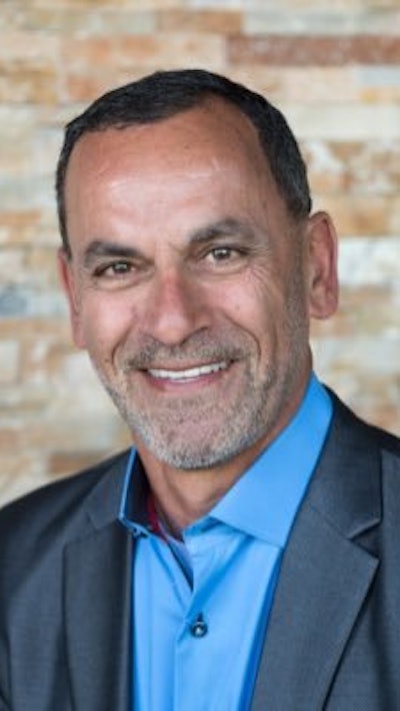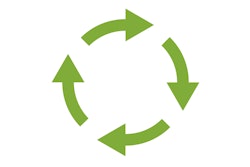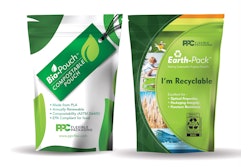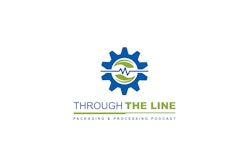Packaging World: In the early days of COVID-19, supply chains received a jolt. For example, we saw food producers that had been selling a certain portion of their frozen poultry in 50-lb. undecorated bags to commercial, foodservice, and institutional operations do an about face to refit to serve more retail and direct-to-home e-comm channels. The consumer behavior changed, out of necessity. Can you describe the evolving landscape?
Abe Eshkenazi: We are seeing a shift in that the consumer, in a home-based environment, is now receiving a lot of the production from the manufacturers or from the suppliers. So supply chain professionals, as well as the entire supply chain—this includes the farmer, the distribution, the manufacturer, logistics, warehousing, all of it—are going to see a shift away from the commercial and industrial and education delivery.
A portion of it will now be going directly to the consumer in a home-based environment. The challenge that a lot of organizations have, and every player within the supply chain is determining, is what does real demand look like in a commercial industrial setting versus a home-based setting. Because that information will give them the opportunity to make the necessary investments and/or changes to their manufacturing and supply chain process to meet the demand.
The challenge that occurs for most of the players within the supply chain right now is the data that's being provided is a highly variable. And then secondly, with the extreme run that occurred on grocery stores, it has challenged the supply chain to keep up.
PW: What exactly is changing, and is it permanent?
AE: Utilization is not going to increase dramatically. We're not going to see a whole lot of more food being eaten. It's just that the supply chain now has to address different consumers or different consumption within the supply chain, which will drive changes to the packaging, delivery, warehousing, all the various players within the supply chain. Each of them will have an impact from the shift of demand. Now going back to the first point, trying to understand what that demand shift is, what is real versus what is temporary and what is surge, is part of the discernment process and decision that each of the players will make within the process.
PW: How is the e-commerce channel reacting to this shift in the balance, or equation, of how consumers acquire food?
AE: First, the e-commerce channel is expanding in terms of availability—in the variety of items that will be available. It's going to take some time to make available all of the preference items within the shopping list or the items that they're procuring. We're probably going to see an increase in the meal kit style meals. We already have seen a surge in E-commerce for grocery stores. Now, whether it's the packaged meals or the in-store fresh type of products, where there isn't as much of a preference, we're going to have a shift in terms of availability and what is important to the consumer right now. More often than not, it's speed first, availability and speed. Consumers ask, “Can you get me what I need?” [from a given category, before they’re too specific about their preference or choice within that category.]
Secondly, we’ll see an increase the variety within each category. Once we understand that this will be a new purchasing pattern, you'll start to see the suppliers increase the variety of the products that will be available. But there will be a demand shift from the industrial and commercial to home-base. For meal kits, we've already seen a significant increase in the valuation of a lot of the meal prep companies. They have increased substantially during the surge time and the stay at home sequestering.
Part of the challenge is, when we get back to a more normalized demand, whether it's in the home-base or in the restaurants or in the commercial setting, your offices, we'll start to see better normalization data. It's uncertainty and variability that are hindering the supply chain response times right now, especially when you see surge purchasing. But the change will require more frequent delivery. The logistics and warehousing have to be modified to deliver fresh food on a timelier basis for individuals. Nobody's going to want to get 25 pounds of chicken at one time, like the commercial channels require. Consumers are going to want enough for maybe one to two days, and that will suffice. We have to change the logistics providers as well to support the new demand that is in the market.
PW: In January, sustainability top-of-mind for packagers and supply chain pros alike. People worried about oversize boxes, uses of corrugated, recyclability, extra dunnage, carbon footprint, etc. Now, supply chains grapple with necessity first, and packaging material-heavy e-commerce is booming. Is sustainability now taking a back seat?
AE: I don't know if it's taken a back seat. I think what's challenging a lot of the supply chains today is a lack of definition as we’re waiting for a better assessment of what demand is going to look like. Once they have that, they can make the necessary investments in sustainable business practices, whether it's in the packaging or in the production or in the waste. But the investment that's going to be required often is done at the front end in terms of measuring sustainability impact. So supply chain professionals, along with sustainability professionals, are going to be challenged in modifying the manufacturing process as well as the delivery, the packaging, and the waste and recycling of the products themselves.
So we will see a shift. For instance, more often than not, you're going to see a higher utilization of cleaning products in the home. The shift that's going to occur will have a ripple effect on the consumer and on the companies. But sustainability has to be accounted for in the front end, not the back end. We fully expect the sustainability professionals, working alongside supply chain professionals, can address the need for sustainable business practices.
Consumers are keenly aware of what's in their products and services and the conscious consumer is going to increase in terms of what is in my product, how was it made, how long has it been sitting on the shelf, and what has been included in the product itself. There's going to be more demand for transparency and visibility within the supply chain. It's going to require that collaboration at the organizational level to present that information to the consumer.
PW: How do you expect supply chains to fundamentally change in the wake of COVID-19, and if so, how?
AE: I think you'll see much more on risk and resiliency embedded within supply chains—redundancies, surge capacity, and responsiveness. Keep in mind, this comes at a cost. Obviously, nobody wants an idle factory, or idle machines, or teams just waiting to be needed. We’re going to have to have creative solutions to address demands in the future for surge. We can't say that we're not aware of these challenges anymore. But, how do you plan for a pandemic versus a financial crisis or an ecological challenge? We've had shifts in demand, and we've had responsiveness in the past, no less than the tsunami in Japan or a number of the challenges that we've had with child labor or slave labor within a number of the manufacturing sectors. It has fundamentally changed the way that we view supply chains and the way that we require transparency and visibility within the supply chains.
And sustainability will have a big role within the supply chain. But the challenge that all of us have right now is the normalization—getting to a more predictable utilization. Now again, we're really not expecting to see a volume increase, but we're going to see a shift in procurement and in utilization, at least in the short term, from the commercial and industrial into a much more home-based environment. What would that look like a year from now is part of the evaluation that supply chain professionals, along with the rest of their teams, will discern. -PW


























